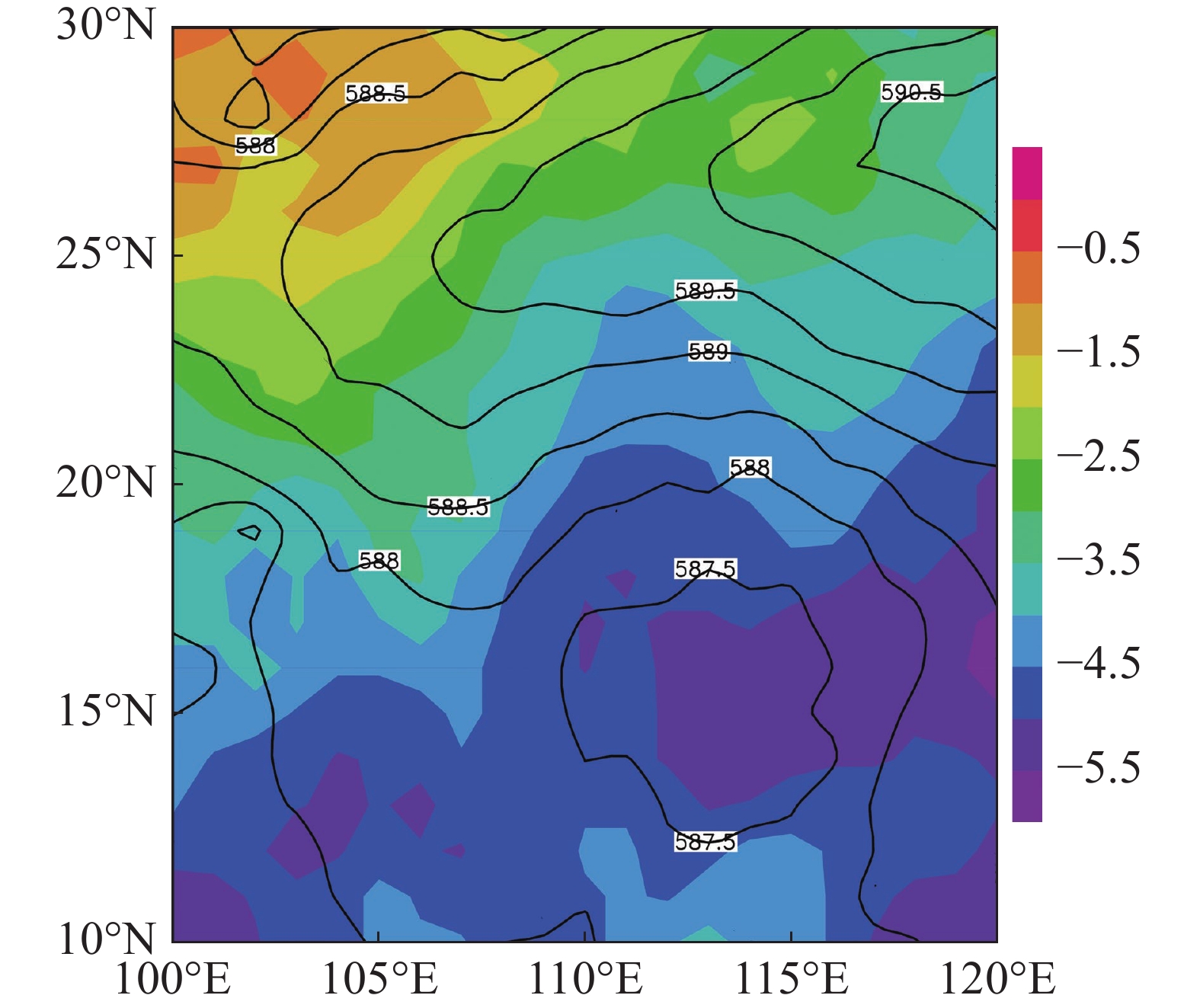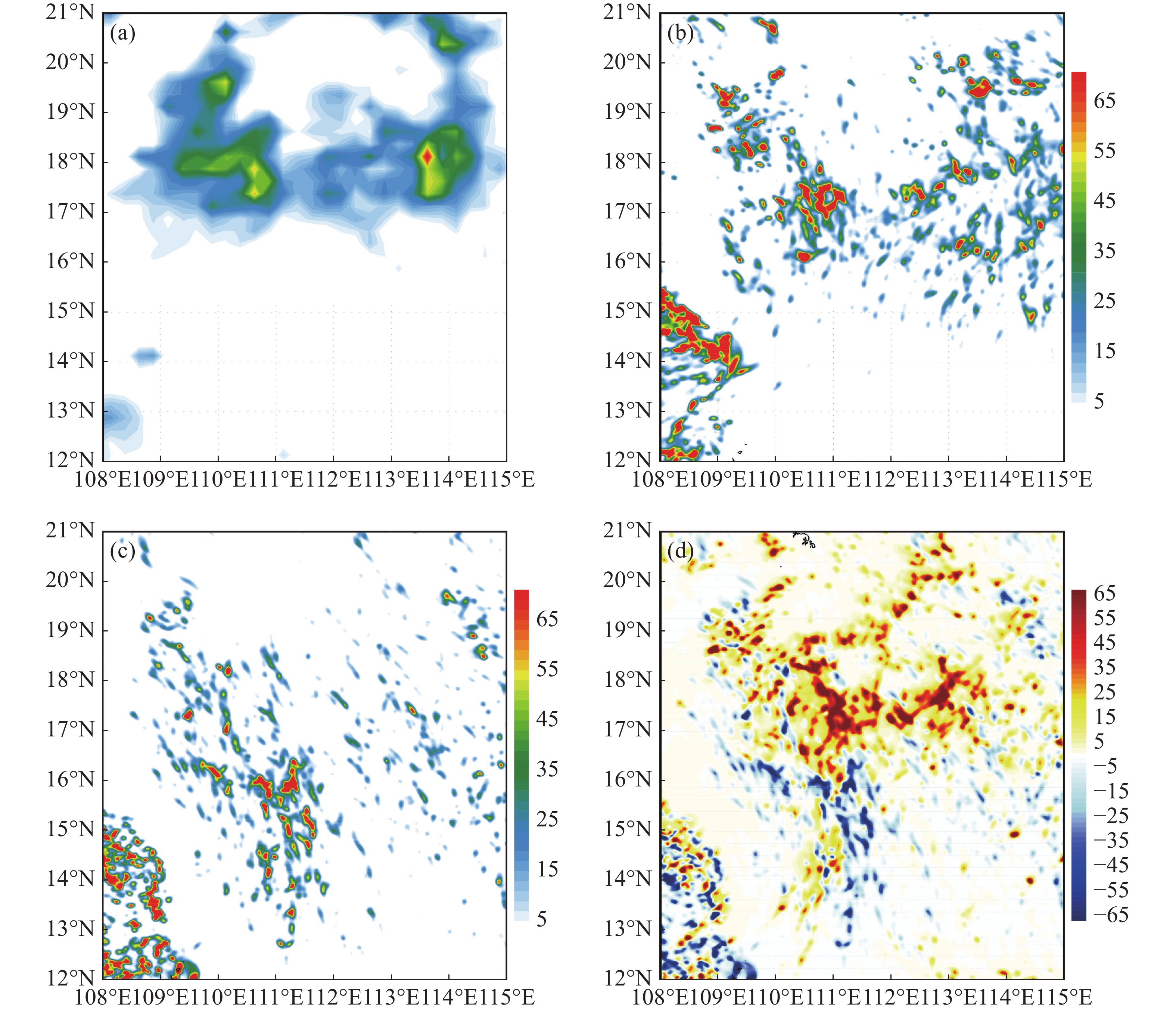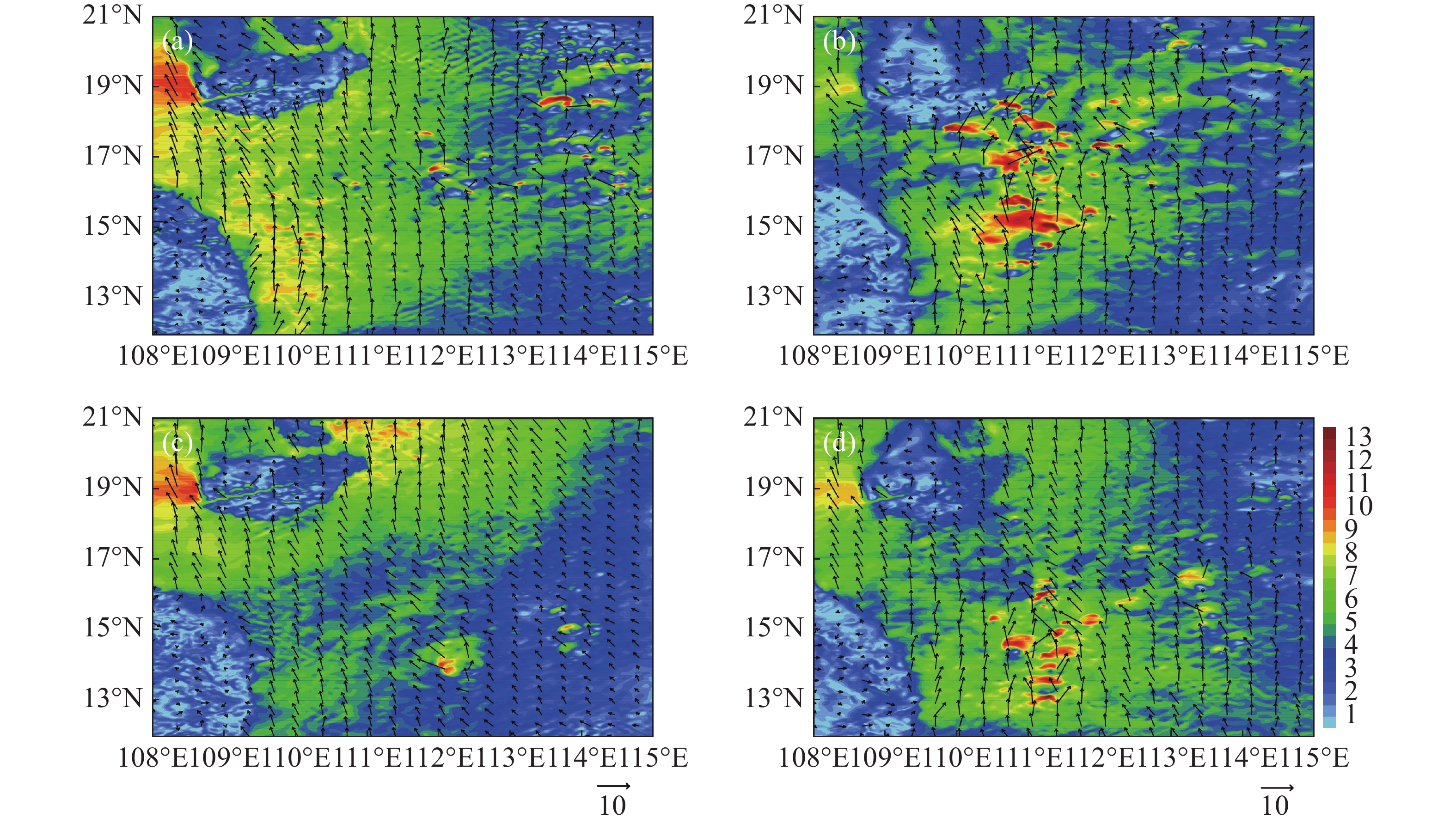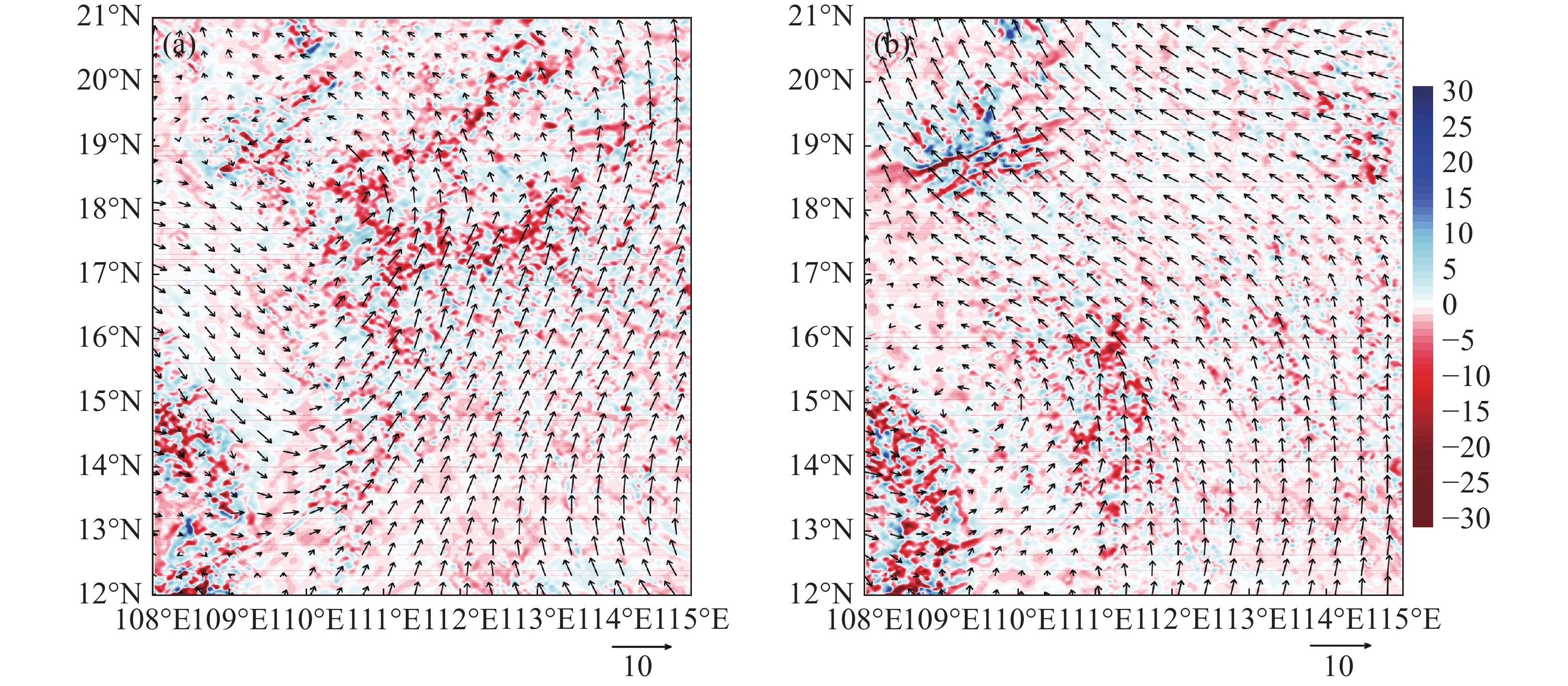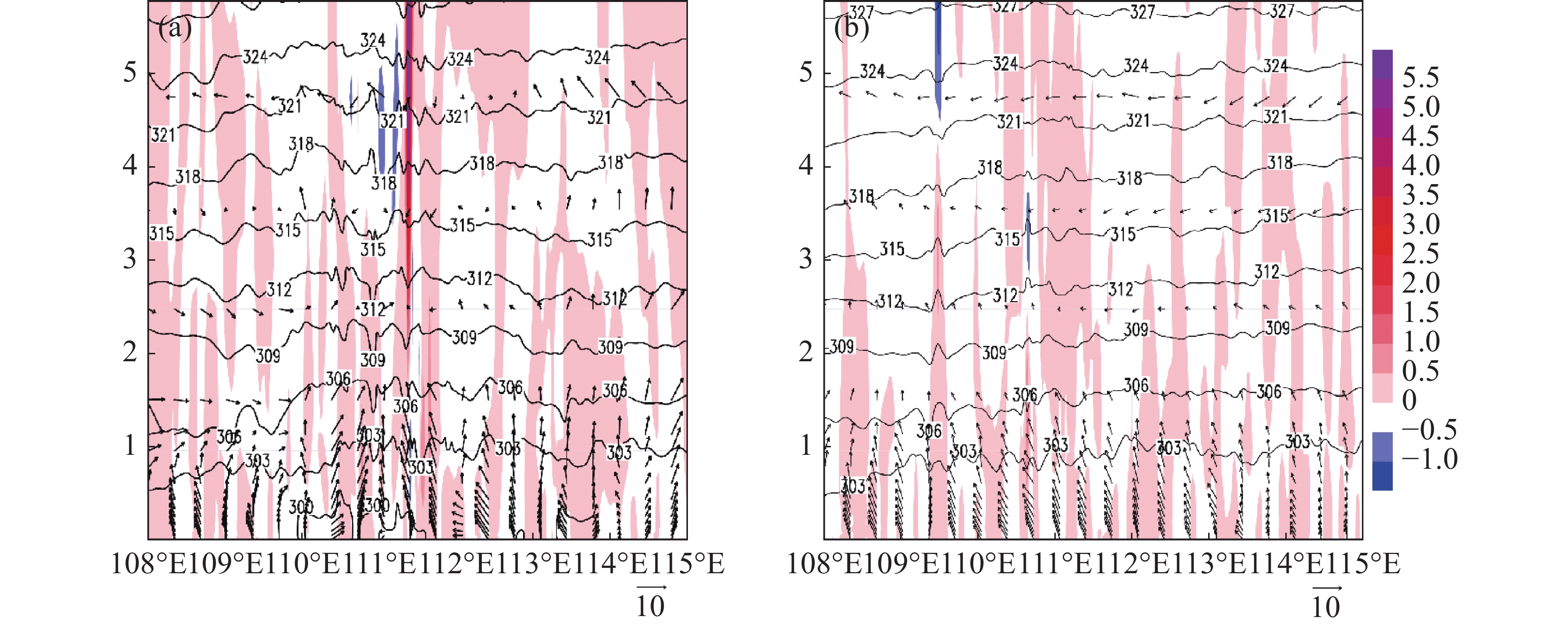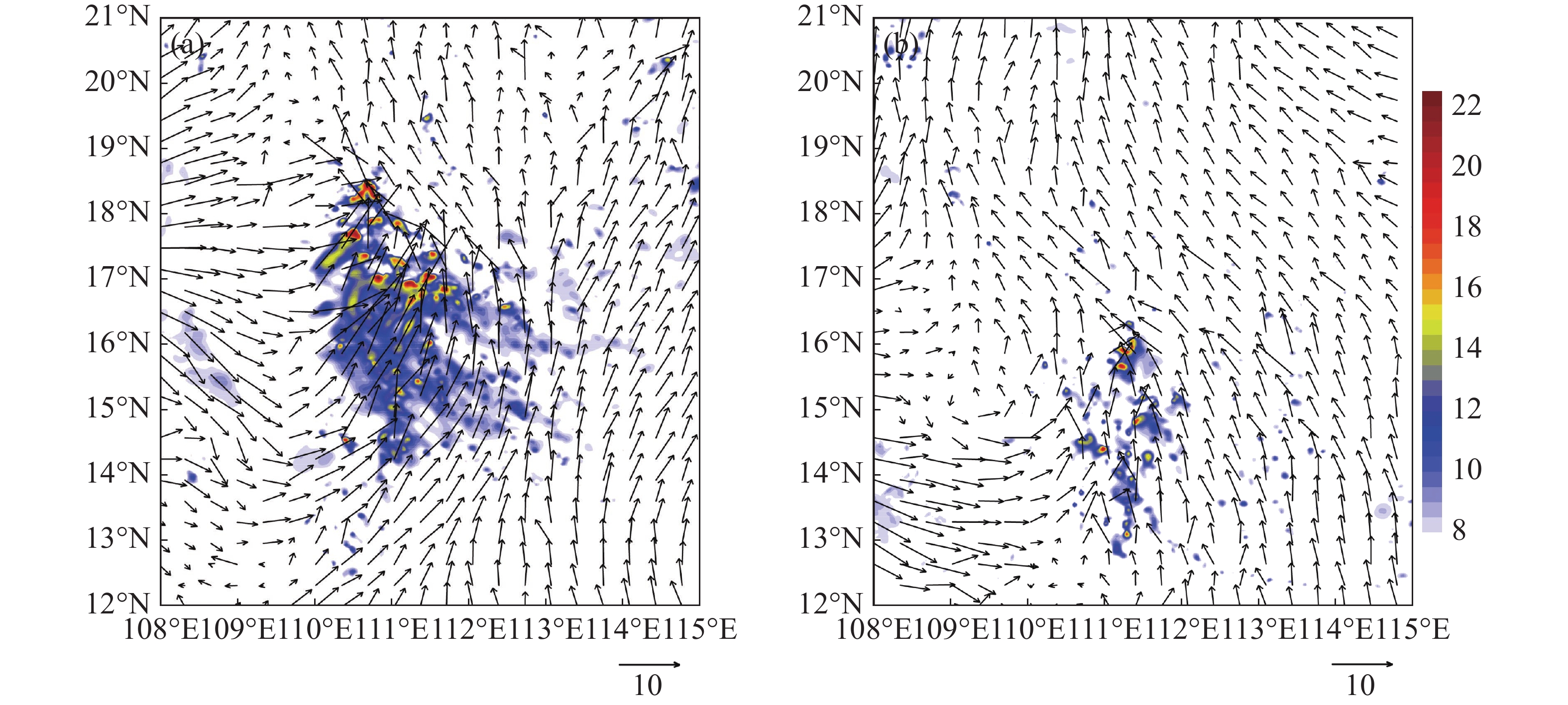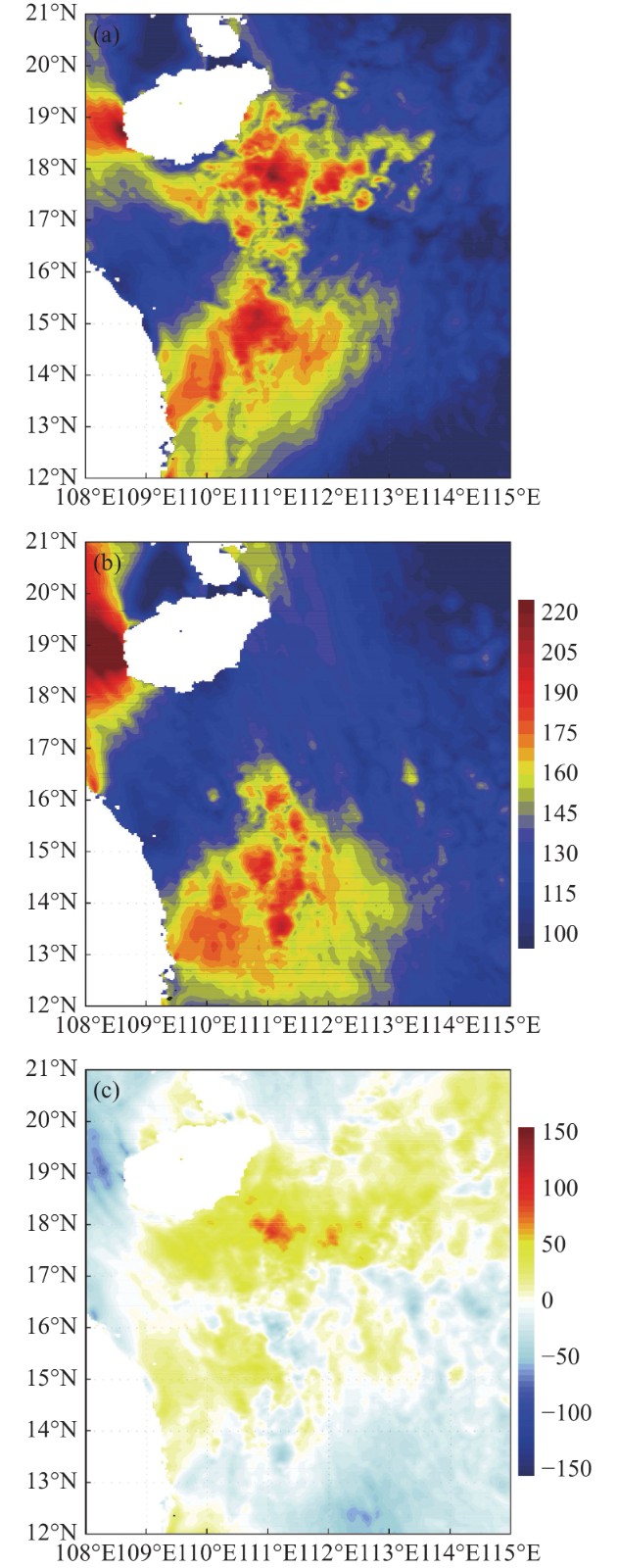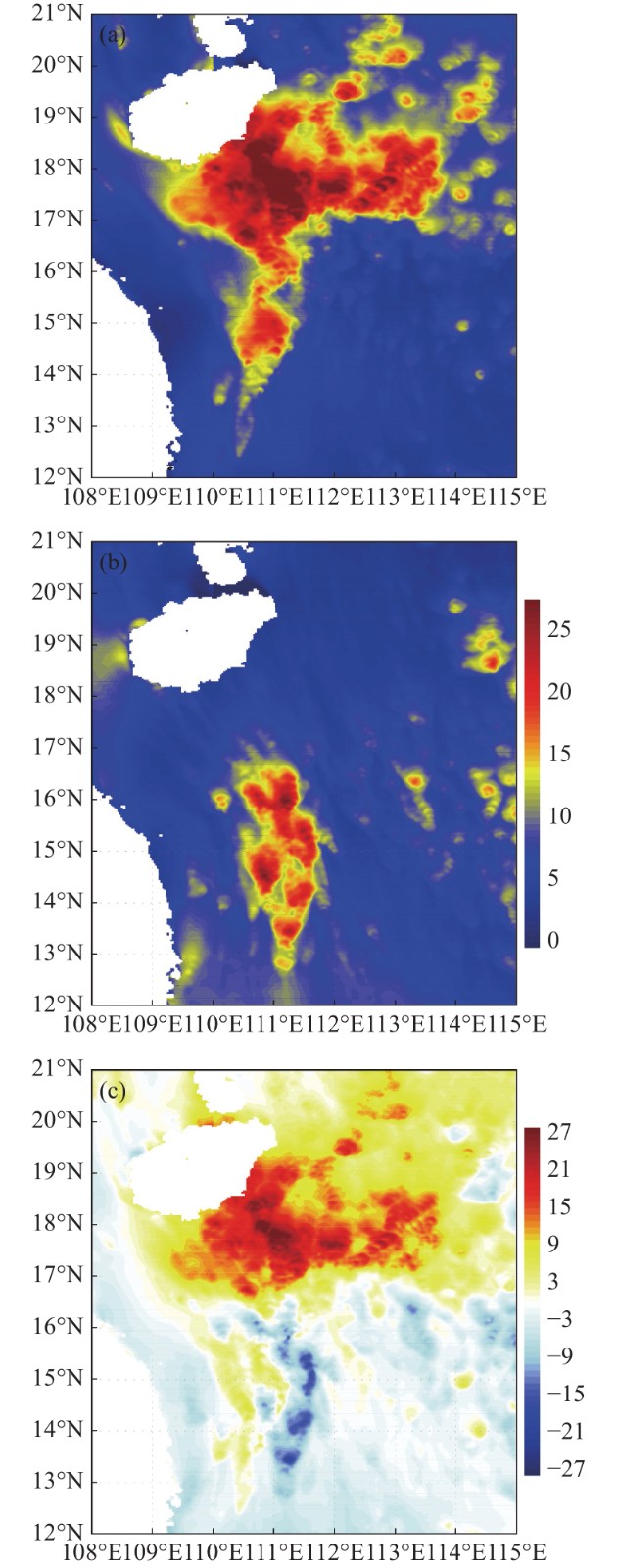-
海温梯度可通过影响上层大气而导致深对流的发展,存在海温梯度的区域会对附近100~1 000 km的地面风场产生扰动,且扰动与海温梯度存在正相关关系[1]。Warner等[2]认为,墨西哥暖流附近产生的海温梯度可引起对流层低层产生辐合。Kuwano等[3]的研究发现,墨西哥暖流侧翼的海温梯度对对流性降水起决定作用,而墨西哥暖流雨带主要由连续不断发展的雷暴形成。近年来的研究也进一步证实中尺度的海温梯度可增强能量的向上输送,从而改变低层大气结构并触发加强对流。Miyama等[4]发现,只有使用高分辨率的海温资料时,才能较好地模拟黑潮附近的对流降水带。研究表明,海温的变化在精细化的天气模拟中至关重要[5-6],海温差异与对流有效位能的差异之间存在正相关关系,暖涡附近增强的地表通量可增加边界层内的相当位温,进而使得对流有效位能增加[7]。天气尺度下,大气对海温梯度的响应过程受到垂直混合机制的影响,而动量的垂直混合不仅由垂直风切变和低层大气浮力决定,区域辐合辐散等风暴特征也起着至关重要的作用[8-9]。前人主要利用卫星遥感和分析资料对海温梯度进行研究,凸显海温梯度的气候效应,缺乏其对天气过程响应的研究[10-14]。然而,强对流灾害性天气通常发生在几小时内。为了更好地做好灾害性天气的预报,有必要研究海温对更小时间尺度的灾害性天气的影响和其在灾害性天气发生发展过程中的作用。
海南省位于我国最南端,省内海洋面积远大于陆地面积,而陆地主要以岛屿为主,四面环海,受海洋影响大。目前,对于海南岛非台降水的研究,多从大尺度环境出发,中尺度分析主要集中在由下垫面分布不均而产生的海陆风,山谷风环流的影响,而对局地海温梯度的作用的关注极少。因此,有必要研究海洋中中尺度的变化对海南岛降水的影响,本研究拟使用WRF模式对发生在海南省的一次强对流过程进行数值模拟,通过一组控制试验和敏感性试验,使用TRMM降水资料与模拟结果对比,旨在分析降水与海洋中海温梯度的关系并研究海温梯度在本次过程中所起的作用。
-
本研究使用的观测资料来源有:由美国国家海洋和大气管理局NOAA(National Oceanic and Atmospheric Administration)提供的逐日海表面温度数据,水平分辨率0.25°;美国国家环境预报中心NCEP(National Centers For Environmental Prediction)提供的FNL(Functional Neuroimaging Lab)数据,水平分辨率1°,时间间隔为6 h,10 hPa以下共26层;热带测雨卫星TRMM(Tropical Rainfall Measuring Mission)的降水产品,水平分辨率为0.25°,时间间隔为3 h,该降水估算数据集具有覆盖面积广、时间和空间分辨率较高等特点,被广泛使用于研究中,并显示出较好的精度和适应性[15-17]。
-
使用中尺度数值模式WRF V3.6.1进行模拟研究[18],模式使用麦卡托投影下的双重嵌套网格(图1-a),分辨率分别为12 km,3 km,对应最外层区域(D1)格点为330×330,内层(D2)为322×367,中心为17°N 112°E。垂直方向设35层,模式层顶100 hPa。模式初始和边界条件使用NCEP FNL 1°×1°的再分析资料。模式选用Thompson微物理方案,该方案是在WSM6微物理方案的基础上发展起来的,方案中包含云水、云冰、雨水、水汽、雪和霰等6种水的相态[19]。其中,雨滴分布函数依赖于雨水混合比,使得雨滴的下落速度较为连续、合理,能更好地描述微物理过程。积云方案使用TiedTke积云参数化方案,该方案可以合理地描述热带深对流、信风积云区域和副热带组织化对流等现象[20]。由于第2层区域中采用分辨率小于5 km的模拟,对流已不完全是次网格尺度现象,故本研究中模式最内层不使用积云参数化方案。其他物理参数化方案使用Dudhia短波辐射方案,RRTM长波辐射方案,Monin-Obukhov近地面方案,YSU边界层方案以及Noah陆面方案。本次强对流天气过程的模拟时段为:2010年8月13日08:00至15日08:00(北京时,下同),前12 h作为spin-up时段,模式结果每半小时输出1次。
-
设计2个试验方案,均采用相同的模式设置,分别为:(1)控制试验(CNTL,下同):采用NOAA提供的分辨率为0.25°的海温资料,从图1-b中可以看到,在西沙到中沙群岛北部有高海温中心存在,海温较周围海区高2 k左右,这使得该区域周围海温梯度大;(2)敏感性试验(EXP,下同),把西沙群岛附近的高海温替换为与周围海温一致,均一化海温场,从图1-c中可以发现,研究区域中海温均匀分布,在西沙和中沙群岛附近海温在29.5 k左右。
-
2010年8月14日午后,在海南岛陆地至东部海域发生了1次雷暴天气,此次雷暴过程强降水出现在海南岛北部陆地以及东南部海域,其中,海南岛上雷电频次达到879次,具有影响范围大,降水强度大的特征,雷暴发生期间,对应海域有高海温梯度区存在,具有较强的海温梯度。因此,通过对这次强对流过程进行数值试验,可以较好地研究南海高海温梯度对局地天气的影响作用。500 hPa上南海北部位于西太平洋副热带高压南侧,有一冷低压位于南海中部至菲律宾地区,并逐渐向西北方向移,在8月14日14时(图2),海南岛位于588线北侧,低压移至我国西、中沙地区,随低压的西北移,海南岛南部对流层中层温度明显较前期降低。同时,850 hPa上中南半岛到南海大部均由一开口向北的槽控制,南海中北部低层吹南到东南气流,将海上暖湿气流向北输送,中高层则对应冷中心,这种上冷下暖的形势有利于增加垂直的浮力不稳定并导致深对流的发展。
-
对比图1-b海温分布与图3-a中TRMM降水分布可以发现,降水带与高海温中心很好对应,主要分布在高海温区及其周围海温梯度大的区域,在17°~19°N,111°~112°E的冷涡区域则基本无降水。模式模拟的控制试验CNTL能较好地模拟出这一特征,降水带主要集中在高海温区域及外围海温梯度较大的区域,只是CNTL试验模拟的降水表现出更强的局地性。EXP试验中,当把海温均一化后,从图3-c中可以发现,降水范围和降水带位置变化均较大,海南岛上的降水强度和降水范围均明显变小,且降水主要位于海南岛西侧,从图3-d可以看出,CNTL试验和EXP试验的差值达70 mm以上,正值区域主要位于海南岛中部,这与TRMM海南岛上的降雨带对应。EXP试验模拟海洋上的降水位置明显偏南,位于西沙群岛西南部,从图1-c中EXP试验的海温来看,在西沙群岛南部14°N以北为海温相对暖区且海温梯度较大,与该区降水位置对应。进一步将CNTL试验减去EXP试验可以发现(图3-d),降水正值区主要分布在西沙、中沙群岛以北,而负值区则位于西沙群岛以南。以上分析结果表明,降水区域与高海温区以及海温梯度存在较好对应关系,高(低)海温梯度区可加强(抑制)降水的产生。
-
海温的不均匀分布可影响中低层风场变化,产生辐合辐散。对于低层风场,对比图4中CNTL试验和EXP试验的10 m风场分布来看,在15日00时和10时,2个试验均表现出风场的日变化特征。在南到东南气流的背景风下,00时(图4-a,图4-c),由于夜间陆地辐射降温,风由陆地吹向海洋,但是可以发现CNTL试验中在中南半岛一带风向由陆地到海洋的转变更明显且海南岛南部海面的风速明显较EXP试验中大,特别是西沙群岛西北部一带,风速差值最高达到10 m·s−1,而在海南岛以北,CNTL试验中风速则明显小EXP试验。在10时主要吹海风,风由海洋吹向陆地,同时发现在CNTL试验和EXP试验中均出现了风向的辐合及风速大值区,CNTL试验主要位于西沙群岛西北地区,EXP试验中风速较小且风速大值区位于西沙群岛以南,这与降水带的分布对应。
进一步分析中层风场的变化,从图5中15日白天1.5 km高度上风场可以发现,在研究区域中,CNTL试验和EXP试验均存在一气旋性涡旋中心,只是CNTL试验中气旋性涡旋中心位于海南岛东南部,辐合带分布在气旋中心及其外围的下风向,在海南岛东部,西沙和中沙群岛北部地区。EXP试验中气旋中心明显偏南,位于15°N,108°E左右,对应辐合带位置也位于16°N以南。
对应海温梯度及降水大值区,笔者选择沿17.5°N作剖面进一步研究,图6给出8月15日10时位温、垂直速度和风场的纬向剖面,由图可见,CNTL试验中在111.3°E左右出现明显的风场辐合,上游吹来的西南风在经过高海温时风速明显加大并在下游与东南风辐合上升,垂直速度向上延伸至5 km高空以上,最大垂直速度达5.5 m·s−1以上。Mahrt等[21]的研究表明,当空气经过暖水面后会导致下风方向的温度梯度变化,局地热力条件的变化进一步导致水平气压梯度改变,从而引起气流强烈的上升下沉运动,本研究也很好地印证了这一结论。在EXP试验中,在海温均一化后,从低层到高层均吹东到东南气流,无明显风场辐合。由此可以发现,海温的不均匀分布可以通过改变局地热力条件而影响中低层的风向风速,使得辐合辐散发生变化,从而影响降水的强度和范围。
-
图7给出CNTL试验和EXP试验在2010年8月15日10时的水汽输送情况,可以发现,2个试验的水汽输送存在较大差异,CNTL试验中,西南风和东南风水汽输送在西沙群岛西北至海南岛东南侧形成较强的水汽辐合,水汽通量最高达22 g·(cm·hPa·s)−1,而EXP试验中高水汽通量区的范围明显偏小,在海温均一化的区域,水汽输送较小,与降水和潜热通量的分布对应较好。对比2个试验,大于8 g·(cm·hPa·s)−1的强水汽通量区主要位于暖海区及海温梯度较大的区域,即CNTL试验中西沙群岛西北至海南岛东南沿线,EXP试验中则位于西沙群岛西南侧,表明暖海温和较大的海温梯度可使低层水汽输送增多,加剧潜热释放,进而加强对流发展。
-
在对流的发生发展中,海气界面的热量通量起着重要作用。不均匀的海温分布在引起气流的辐合辐散的同时,也会导致低层水汽向该区辐合,使潜热释放加强,从而加强对流。从15日的平均潜热通量和感热通量的分布可以发现(图8,图9),CNTL试验和EXP试验的共同特点是,整个模拟过程中潜热通量和感热通量都为正值,通量由海面向上输送,对流发展地区为高潜热通量和感热通量区,对应高海温区和大的海温梯度区。CNTL试验中,日平均潜热通高于150 W·m−2的区域主要位于西沙群岛以北,海南岛西南侧以及西沙群岛以南,西沙群岛以北的潜热通量最高达220 W·m−2以上,位于18°N 111°E附近,与高海温及降水区对应,降水过程中较大的潜热释放有利于对流的维持和发展。EXP试验中,除海南岛西侧的大值区外,高潜热区主要位于西沙群岛以南,且强度较小。从2个试验模拟的潜热通量的差异可以发现,正值区主要位于西沙群岛以北,与高海温和大的海温梯度区对应,负值区则位于西沙群岛以南,在西沙群岛附近海温被均一化后,对应海表的高潜热区也消失。潜热通量主要是水的相变引起的热量变化,较高的海温可导致更多的洋面蒸发,高温高湿的空气被输送到上空,为对流发展提供能量。感热通量与潜热通量分布相似,CNTL试验中西沙群岛以北的感热通量较周围约高出20 W·m−2,EXP试验中西沙群岛以北的高感热通量区消失,西沙群岛以南的感热通量却增大。将CNTL试验减去EXP试验后,也表现出与潜热通量相似的特征。
-
前人对于海温梯度的研究关注其气候效应,目前,对于南海北部海温梯度的研究也主要集中在其对大尺度环流的影响上[22-23]。研究表明,海温梯度的变化可通过影响边界层要素从而影响局地天气[9]。因而笔者利用WRF模式对2010年8月15日发生在海南的一次强对流过程进行模拟,通过设计一组控制试验和海温敏感性试验,对比分析控制试验和敏感性试验中水汽输送,中低层风场的变化以及地表通量等研究海洋中高海温梯度对强对流过程的影响作用。南海北部为高海温和海温梯度区域时,可使其上空的热力条件受到改变从而影响中低层的风向风速,引起强烈的上升下沉运动,使低空更多水汽向该区辐合,加剧洋面上潜热通量的释放,使高温高湿的气流上升,为对流的发展提供能量,导致强对流天气的发生。分析表明,强对流发生区域与高海温区以及海温梯度对应,高(低)海温梯度区可使得感热通量和潜热通量发生变化从而加强(抑制)降水。以上研究仅仅是针对一次个例的数值模拟试验,结论代表性还需通过更多个例研究证实。
本研究仅分析了海洋对大气单向的影响过程,在实际海气相互作用过程中,两者的关系应该是双向的。有研究表明,海表面风应力对海温梯度的响应一方面会改变海气间的热通量,另一方面风应力的旋度造成海水的上翻、下沉运动,从而对局地的海温分布型产生反馈作用[24]。对南海海气相互作用更全面的认识可能需要使用海气耦合模式。另外,在对流发展过程中,除了海温,气团变性、东南风的强弱和海气温差等因素也会影响对流的发展,本试验只研究了海温的作用,在将来的工作中,将进一步挑选不同个例从更多方面加强对海南强对流天气的形成机制进行分析研究。
Numerical simulation of the effects of sea surface temperature gradients on severe convective weather over the South China Sea based on WRF model
doi: 10.15886/j.cnki.rdswxb.20220014
- Received Date: 2022-04-10
- Accepted Date: 2023-03-28
- Rev Recd Date: 2023-03-15
- Available Online: 2023-07-05
- Publish Date: 2023-09-25
-
Key words:
- sea surface temperature gradients /
- numerical simulation /
- WRF /
- severe convection
Abstract: To investigate the impact of sea surface temperature gradients on severe convection, Weather Research and Forecasting (WRF) model is used to simulate a severe convection event occurred in the northeast of the South China Sea on 14 August 2010.The characteristics of water vapor transport, wind field and ground surface heat flux were analyzed during the development of severe convection by comparing a control run (CNTL) with a sensitivity experiment (EXP). Results show that ocean warm eddy and high SST gradient can stimulate convergence or divergence and enhance moisture transport by changing local thermal conditions, which cause release of latent heat providing energies for the evolution of severe convection. The precipitation regions correspond to the high SST center and the strong SST gradient area. The high (low) SST gradients can cause changes in sensible heat flux and latent heat flux, thus strengthening (inhibiting) precipitation.
| Citation: | YANG Wei, LI Xun, SHI Juan. Numerical simulation of the effects of sea surface temperature gradients on severe convective weather over the South China Sea based on WRF model[J]. Journal of Tropical Biology, 2023, 14(5): 560-568. doi: 10.15886/j.cnki.rdswxb.20220014 |


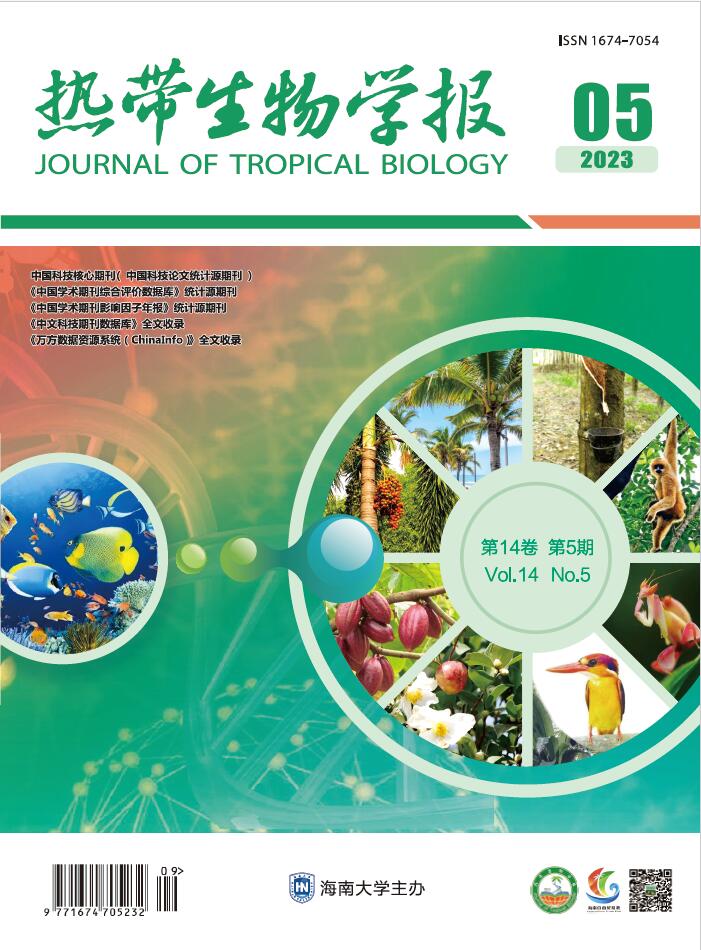


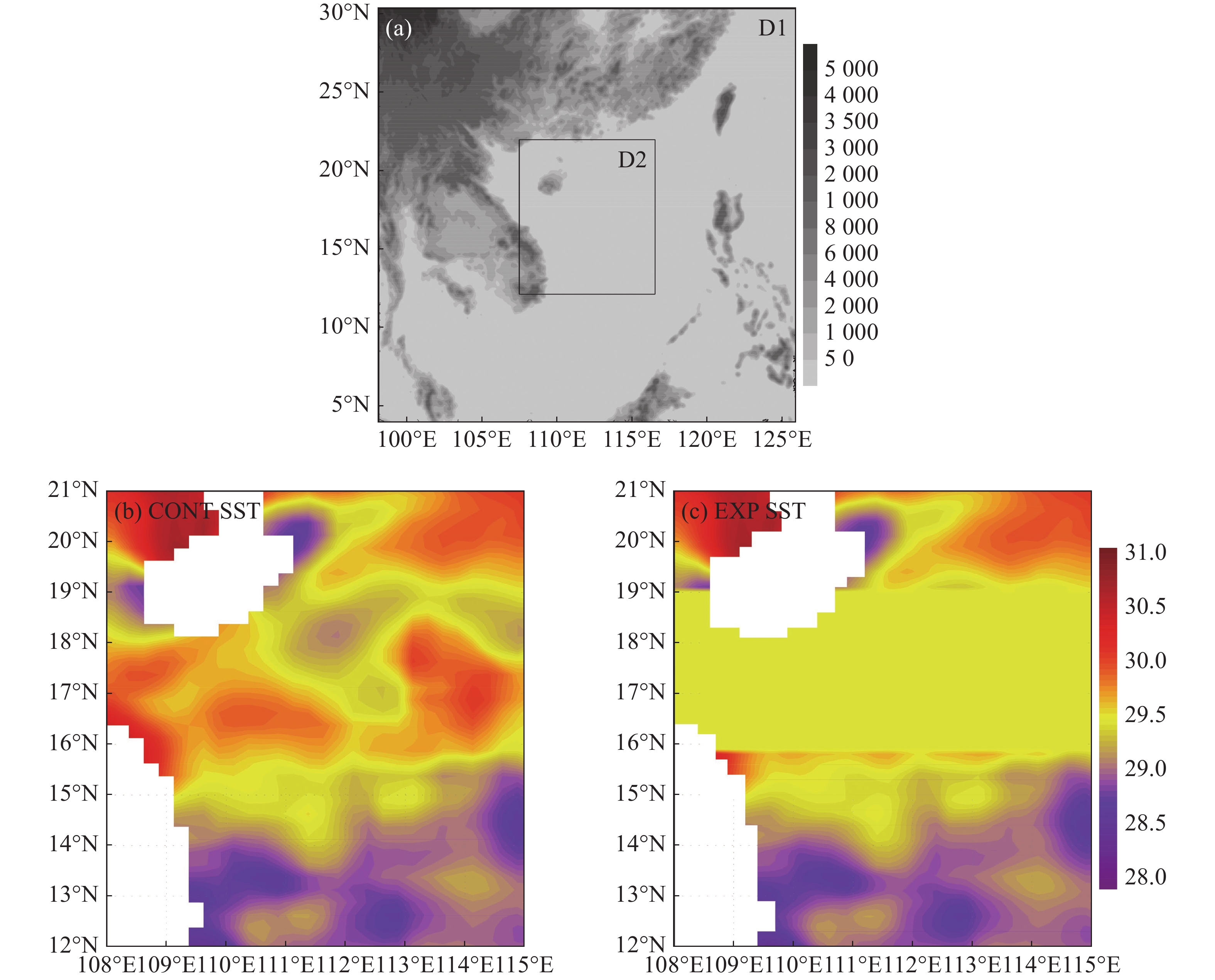

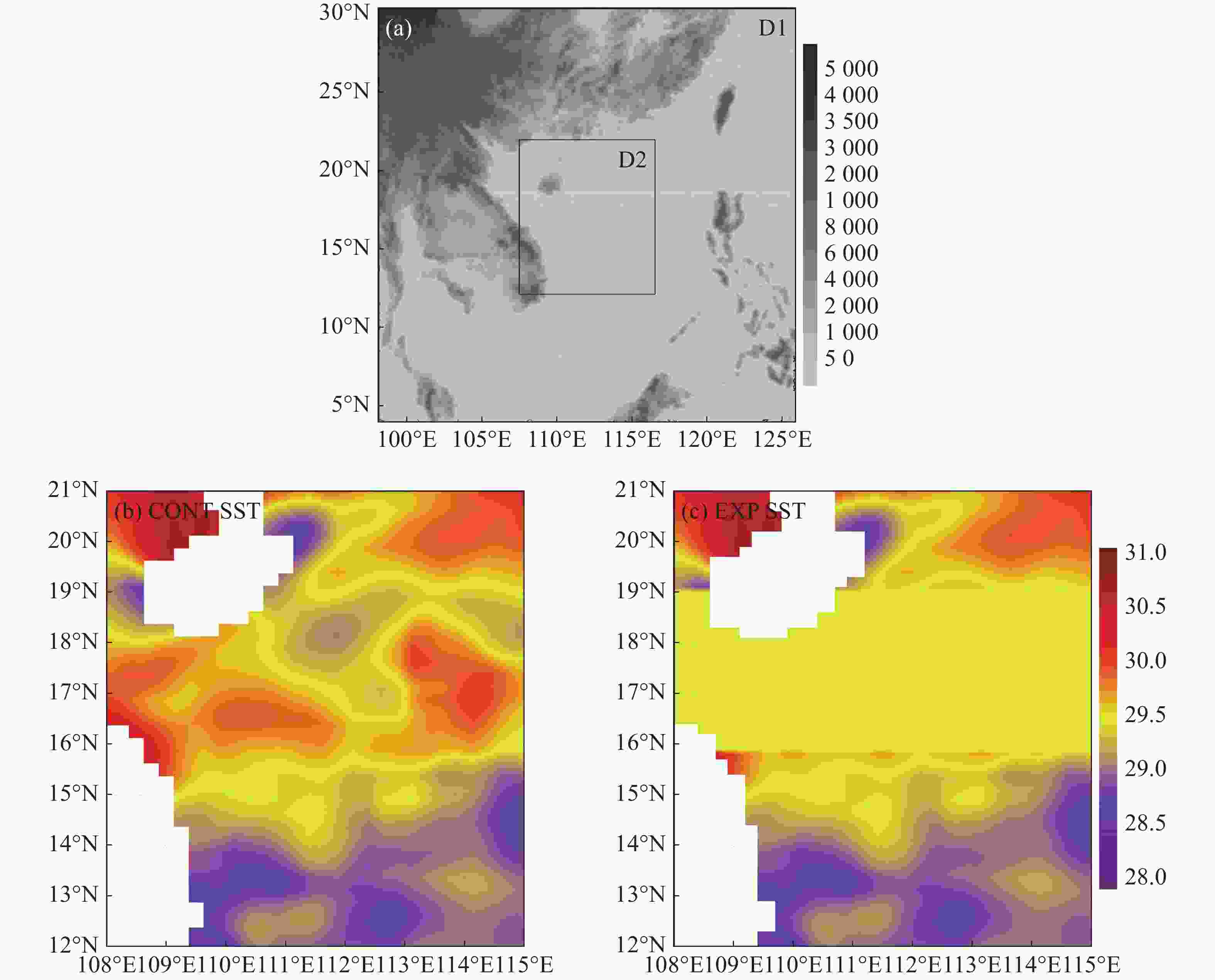
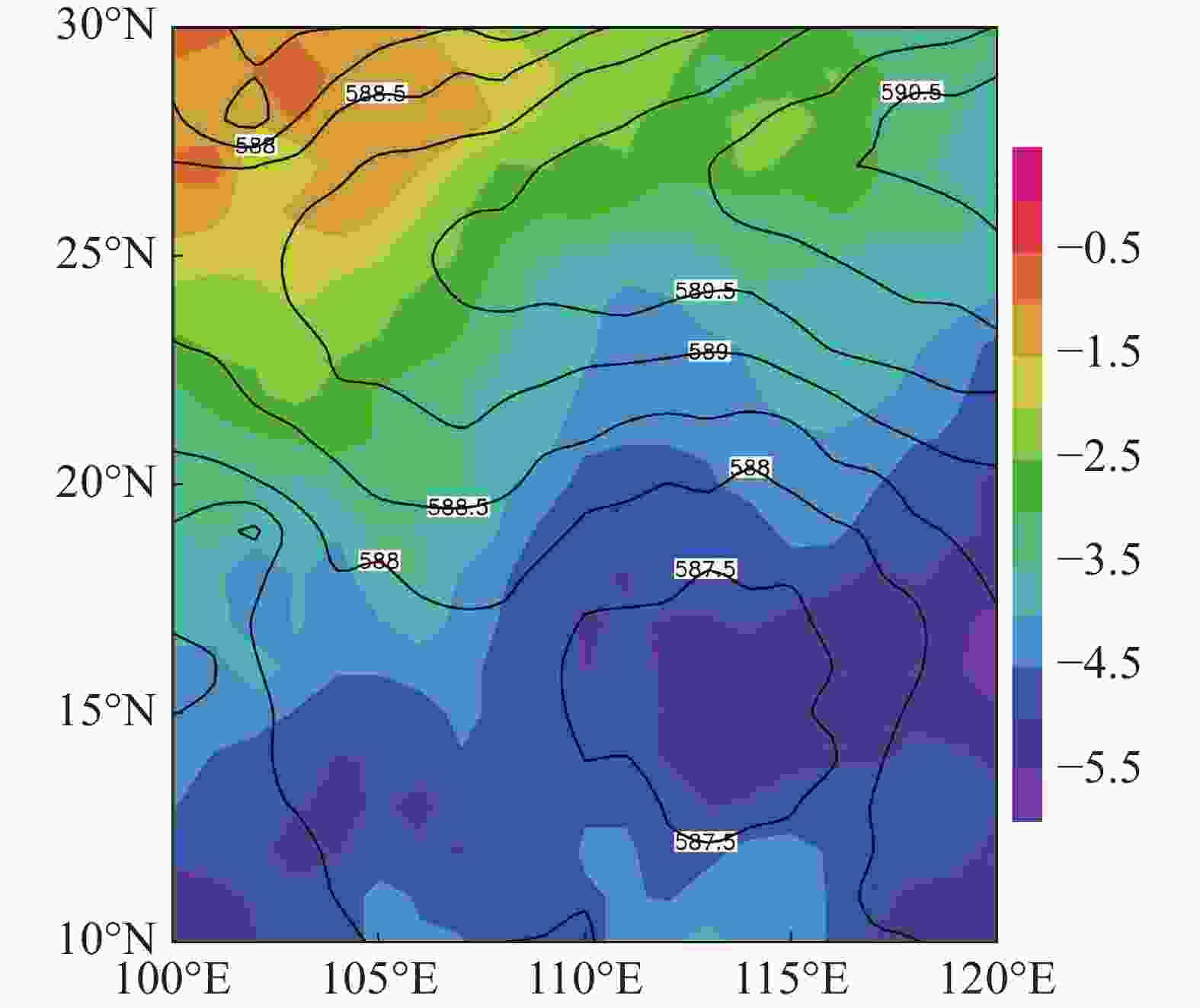
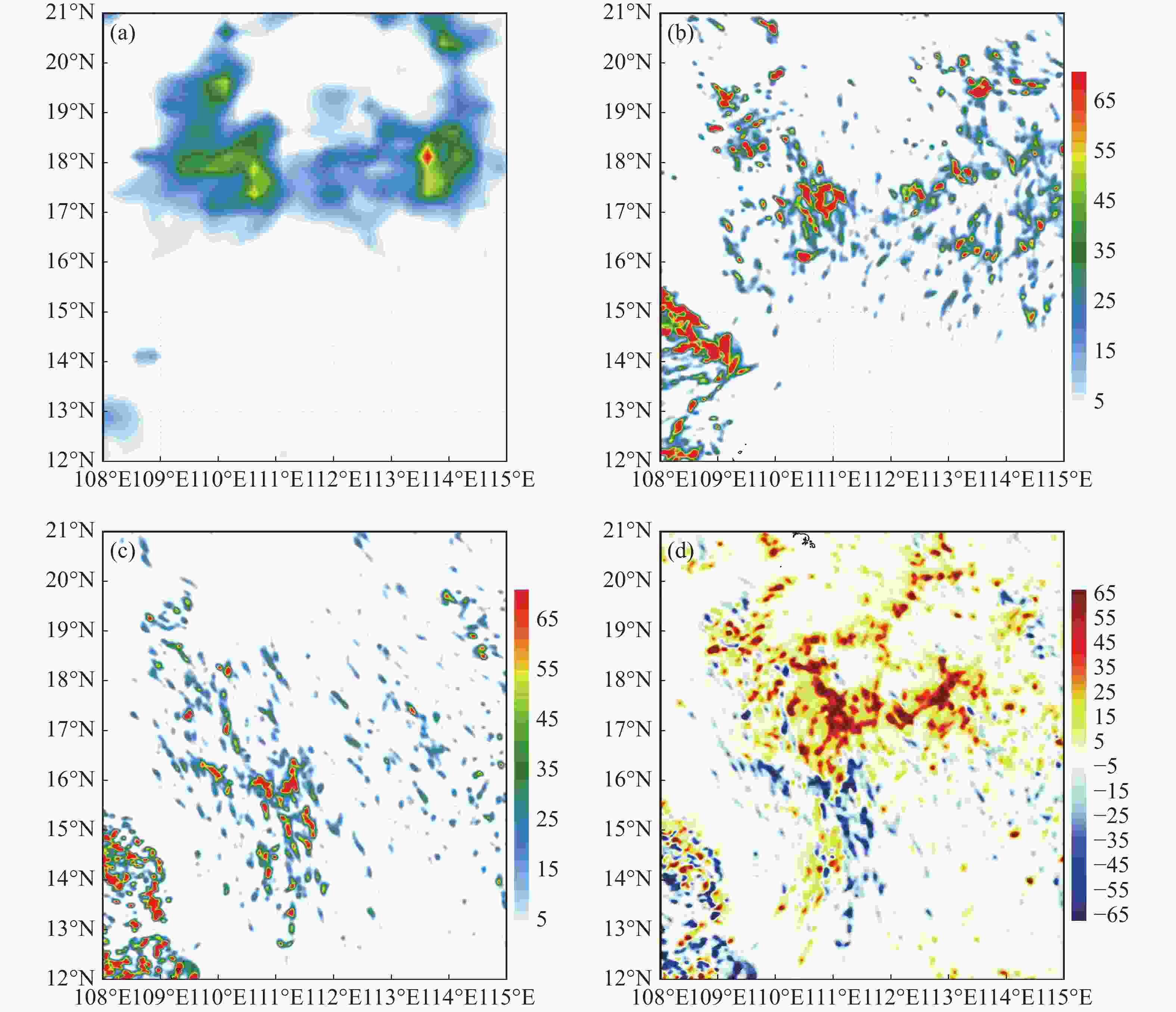
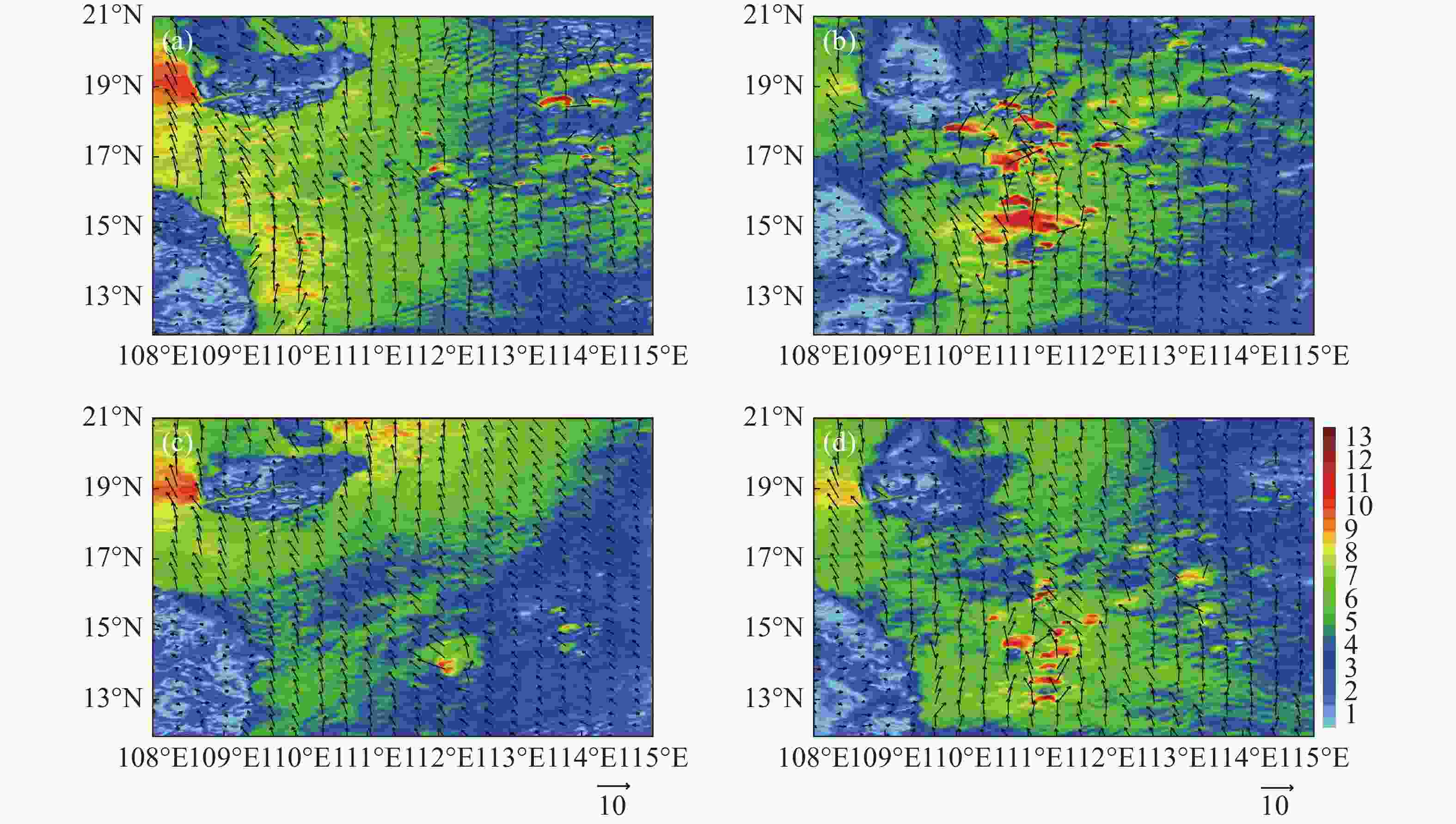
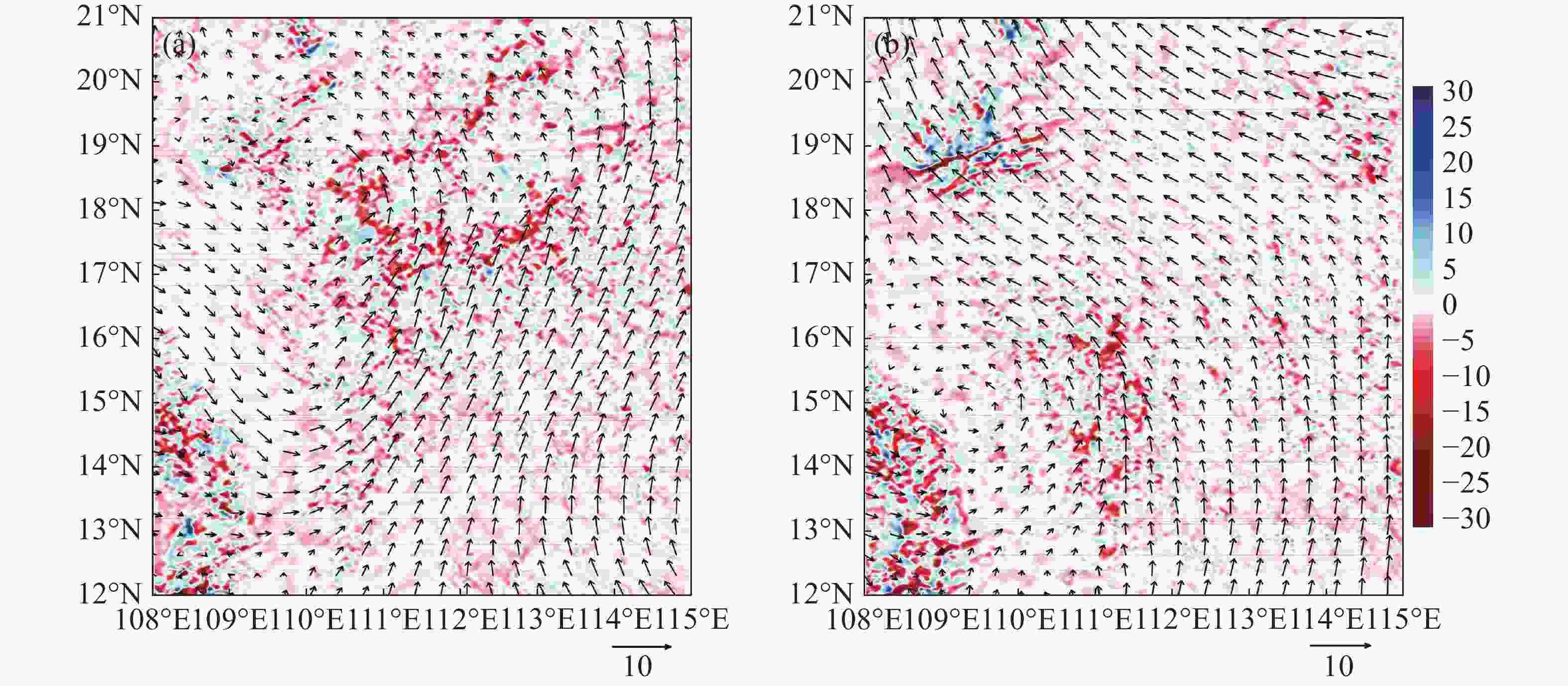

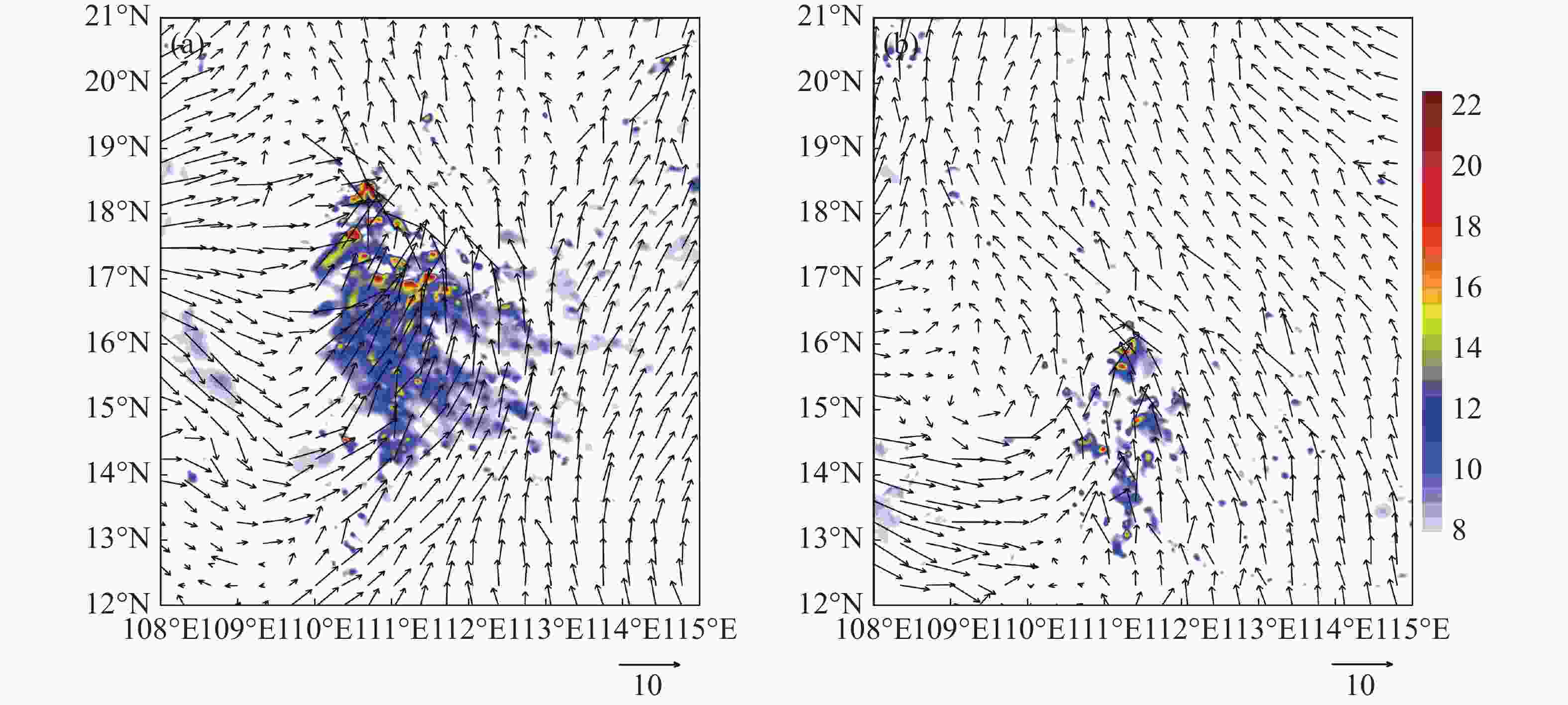
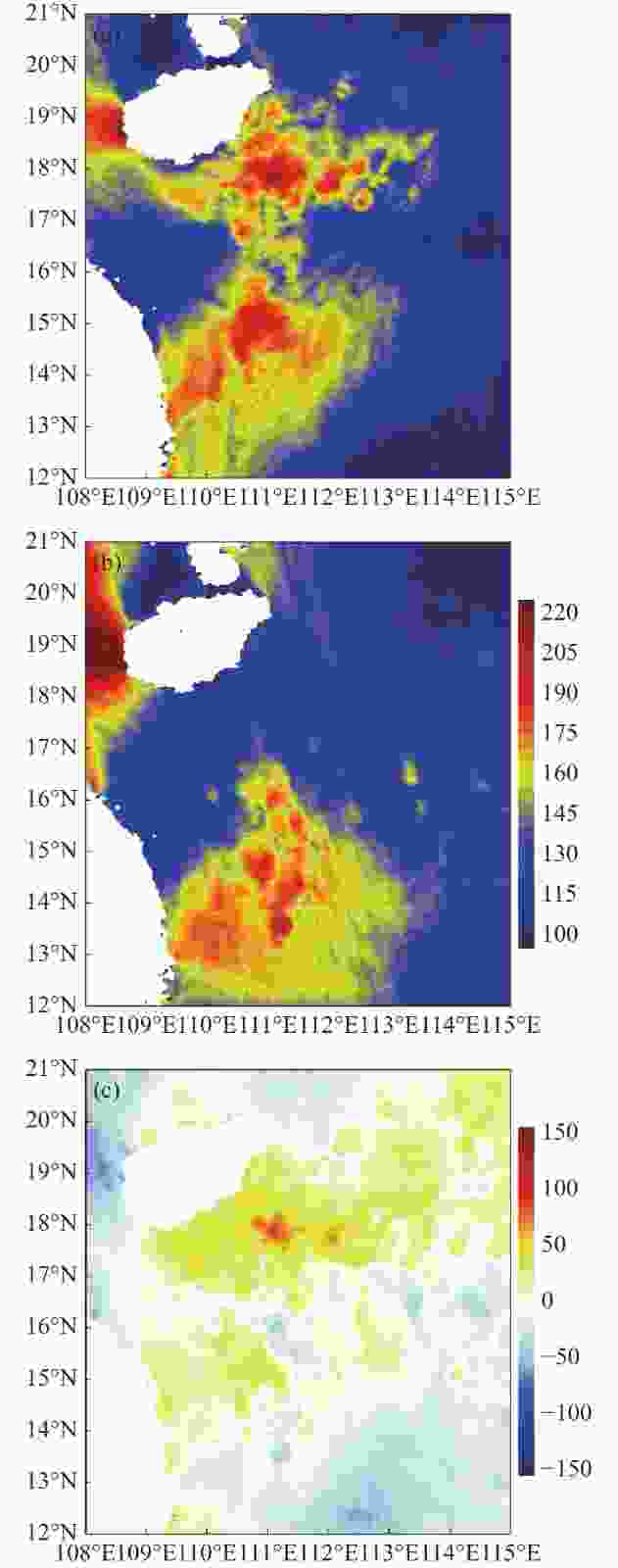
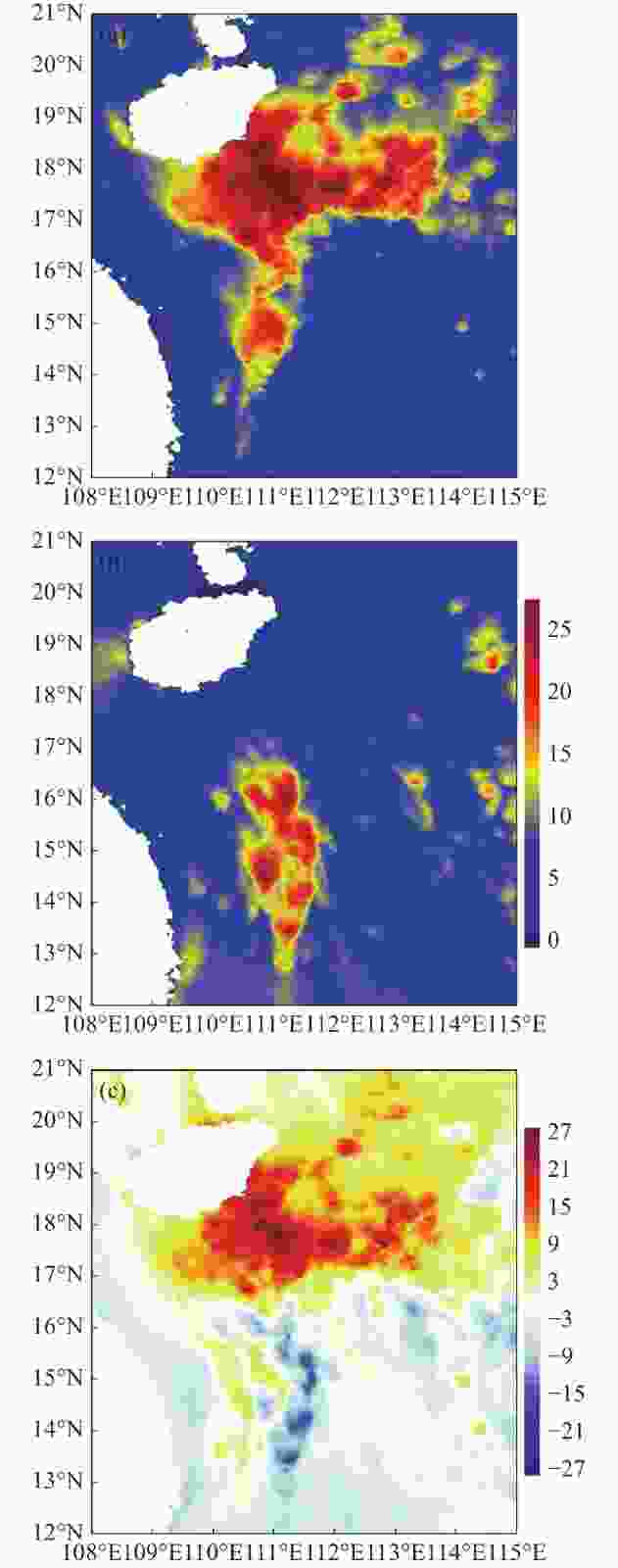
 DownLoad:
DownLoad:
